Sky Piercer Conclave
It is only natural, in high altitude environments such as mountains, that new fighting styles would be divised by any rangers that roam those regions. Fierce daredevils and bold dragoons, in sharing thoughts and observations about flying creatures - whether through teachings of generous celestials and elementals, or through tracking down wyverns and rocs - eventually led to the formation of the Sky Piercer conclave. These risk-taking individuals found great power and thrill in taking fights to the skies with their airborne enemies, or from striking their grounded foes with a drop from the heavens.
Additional Ranger Spells
| Level | Spell |
|---|---|
| 3rd | Feather Fall |
| 5th | Earthbind |
| 9th | Fly |
| 13th | Death Ward |
| 17th | Control Winds |
Soaring Leaps
When you choose this archetype at 3rd level, your ability to launch yourself through the air - and gracefulness with landing - greatly increases. You can use Dexterity instead of Strength when determining your jump distance, your maximum jump distance is doubled, and you are not knocked prone when you take falling damage or land in Difficult Terrain.
Additionally, you learn a language of your choice of a being related to your aerial training: Celestial, Draconic, or Primordial.


















Aerial Techniques
Also at 3rd level, you gain a supernatural aptitude for aerial combat. You learn three techniques of your choice. Many techniques enhance an attack in some way. If a technique can be performed as an action, it can replace one of your attacks. You can use only one technique per attack. You cannot use more than one technique at the same time. You learn one additional technique of your choice at 7th, 11th, and 15th level. Each time you learn a new technique, you can also replace one technique you know with a different one.
If an aerial technique requires an opposing creature to make a saving throw, the DC is equal to your Spell Save DC.
You can use aerial techniques a number of times equal to your proficiency bonus +2. You regain all expended uses after a long rest.
Aerial Momentum
Finally, you can convert some energy of aerial techniques, spellcasting, and falling with each other.
Creating Spell Slots. You can transform unexpended uses of aerial techniques into one spell slot as a bonus action on your turn. The spell slot must be for a level you can cast as a Ranger, and the level must be equal to the number of technique uses expended. Any spell slot you create with this feature vanishes when you finish a long rest.
Creating Technique Uses. As a bonus action on your turn, you can expend one spell slot and gain a number of uses for aerial techniques equal to the slot's level. These additional uses vanish when you finish a long rest.
Falling With Style. If you take fall damage, you can regain 1 expended use of your aerial technique feature or an expended 1st Level spell slot as a reaction.
Daredevil's Thrill
At 7th Level, where others might feel vertigo, your mind and reflexes get sharper. So long as you are 20 feet or higher in the air, or near a window or edge 30 feet or higher off of the ground, you gain advantage on all Strength, Dexterity, and Wisdom ability checks.
Additionally at 7th Level, you can subtract a number of feet from your fall when calculating fall damage, up to your Proficiency Bonus x 10 (min. 1 damage from a fall). You also have advantage on saving throws to resist being Frightened.
Advanced Aerial Techniques
When you reach 11th Level, your aerial techniques improve and you unlock more techniques, as you become more and more comfortable with your wind-attuned abilities.
Aerial Superiority
At 15th Level, you gain a level of mastery over the winds themselves, and your fearlessness inspires others. You have immunity to the frightened condition, and all friendly creatures within 60-feet of you and can see you have advantage on saving throws to resist being frightened. Additionally, once per long rest, you can cast the Investiture of Wind or Wind Walk spell without spending a spell slot.
Techniques
The Aerial Techniques are presented in alphabetical order.
-
Dire Hold. If you hit with a melee weapon attack, you deal an additional 2d6 damage, any fall damage you take this turn is halved, and the target must make a Strength Saving Throw. On a failure, they are knocked prone, and if you land adjacent to the them, you can grapple them (if they are no larger than 1 size category larger than you), or you begin climbing them (if they are greater than 1 size category larger than you).
At 11th Level, the target has disadvantage on ability checks and saving throws for as long as you are grappling or climbing them.
-
Dive Bomb. If you hit with a melee attack, any fall damage you take this turn is halved, also increase the damage of that attack by 1d6 for every 10 feet you fall, with a maximum number of d6s up to your Ranger level, with a minimum of 1d6 if you fall less than 10 feet.
At 11th Level, you can also make each creature within a 10-foot-sphere of the target location (including the target, and excluding you) to make a Strength Saving Throw. On a failure, those creatures take the bonus damage of the Dive Bomb as Force damage and are knocked prone. On a success, those creatures take half as much damage and are not knocked prone.
-
Graceful Glide. As a bonus action, you gain a flying speed equal to your movement speed until the end of your current turn, and you do not provoke opportunity attacks when you fly out of an enemy's reach. At the start of your next turn, if you are still midair, you begin to fall if nothing is holding you aloft.
At 11th Level, the fly speed increases to twice your movement speed, and for the rest of the round you use this technique, you gain the benefits of the Dodge action.
-
Howling Trunade. As an action, each creature within a 20-foot cone of you must make a Constitution saving throw. On a failed save, those creatures take 2d6 Thunder damage, are pushed up to 10-feet away from you, and are deafened for 1 minute. On a success, they take half as much damage and are not moved or deafened. A creature that fails the save can make a Constitution saving throw at the end of their turn to end the effect early. Any Medium or smaller objects that aren’t secured to anything and that aren’t worn or carried by anyone are pushed 20-feet away, causing any creatures in their way to make a Dexterity saving throw. Creatures take 2d6 bludgeoning damage if they fail the Dexterity saving throw, or take no damage if they succeed. The sound of this technique can be heard up to 100 feet away.
At 11th Level, the cone's size increases to a number of feet equal to 10 x your Proficiency Bonus, and the Thunder damage increases to 4d6.
-
Levitating Pulse. As an action, choose a point you can see within 60-feet of you. Each creature within a 20-foot-cube of that point makes a Constitution Saving Throw (willing creatures and Medium and smaller objects automatically fail the save). If they fail, they are moved 20 feet upward. Targets that are two size categories or larger than you have advantage on the saving throw. Non-flying creatures made airborne by this feature are affected by a Levitate spell, and do not start falling normally until 1 minute, you lose concentration (as if you were concentrating on a spell), or you end the effect on your turn (no action required).
At 11th Level, the maximum distance you can levitate creatures and objects by this technique becomes 10 feet x your Proficiency bonus. Creatures of your choice in the area are immune to the Levitation.
-
Lightning Step. As an action while you have a melee weapon equipped, a number of creatures of your choice within a 30-foot long by 5-foot wide line of you must make a Dexterity Saving Throw. On a failed save, those creatures take your weapon's damage as Force damage, and 2d6 bonus Lightning or Thunder damage (your choice). On a success, they take half as much damage. Then, you can teleport to an unoccupied space you can see that is adjacent to any point on the line.
At 11th Level, the length of the line can be up to 10 feet x your Proficiency bonus, and you can change directions at any point on the line (the maximum distance must remain the same).
-
Phantom Wings. Requirement: 11th Level.
As a bonus action, you surround yourself with blustering wind. While this effect is active, you gain a flying speed equal to your walking speed, and any effects that would give you a flying speed instead increase your flying speed. This feature lasts 1 minute, until you become incapacitated, or you end the effect (no action required). If you are mid-air when this effect ends, you fall normally unless you have a way to slow your descent. All creatures within 30-feet of you have a fall speed reduced to 10-feet per round. If a creature lands in the area of effect, it takes no falling damage and can land on its feet.
-
Rising Updraft. When you hit a creature with a melee weapon attack, each creature within a 10-foot radius, 20-foot high cylinder centered on you must make a Strength saving throw. On a failed save, those creatures take 2d6 Thunder damage and can be lifted up to 20 feet toward the top of the cylinder. On a success, those creatures take half as much damage and are not moved. If you hit a creature with this effect, you can levitate up to 20 feet into the air.
At 11th Level, the height of the cylinder becomes 10-feet x your Proficiency Bonus, the levitation increases to equal the height of the cylinder, and the bonus damage increases to 4d6. Additionally, creatures that levitate into the air by this effect do not begin falling until the start of your next turn.
-
Roc's Reflexes. Requirement: 11th Level.
If you would be hit by an attack or fail a saving throw, you can use your reaction to add +5 to your AC or saving throw, with an additional bonus of +1 for every 10 feet above the ground you are. You can add this before or after you roll the saving throw, but not after you know the result of the save.
-
Soaring Smite. Requirement: 11th Level.
If you hit with a melee weapon attack, you can spend a Spell Slot to recreate one of the following spell effects as part of the same attack: Searing Smite, Thunderous Smite, Wrathful Smite, Branding Smite, Blinding Smite, Staggering Smite, Banishing Smite, Destructive Wave. You must spend a Spell Slot of an appropriate level to cast that spell, and it must be a spell of a level you can cast. It is treated as a Ranger Spell for you. You cannot cast any other spell during the turn you use this technique. The maximum level of a spell you can cast this way is equal to every 10 feet you moved in the air this turn.
Credits:
Homebrew by Misty_Jago
The illustrations credited below were used in good faith to create this document without express permission from their owners.
Art by Thanh Tran
Brush layers by Denny Trang and Daniel Kamarudin
-
Squall Guard. You can use your reaction to protect against a ranged attack you can see by creating a bubble of air. The bubble is centered on you and covers a 10 foot radius that goes around corners. Ranged weapon attacks that target a point within or behind the bubble have a -5 penalty. If a missile subject to this effect misses, you can cause it to fall to the ground harmlessly or make a ranged attack with a range of 20/60 using the item you just caught, as part of the same reaction. You make this attack with proficiency, regardless of your weapon proficiencies.
At 11th Level, the bubble lasts up to 1 minute, and you can make the bubble using a bonus action unprompted. The effect ends early if you lose concentration (as if you were concentrating on a spell), or if you choose to end the effect (no action required).
-
Tornado Arte. Requirement: 11th Level.
You can cast the Whirlwind spell centered on the ground beneath you, without spending a spell slot, and with the following changes:
- The spell uses somatic components in addition to its verbal and material components.
- You cannot be restrained by or take damage from your own whirlwind.
- The damage of the spell is 6d6 bludgeoning instead of 10d6.
After the spell ends, you can't use this technique again until you finish a short or long rest.
-
Vacuum Blade. Make a ranged spell attack against a creature within 60 feet of you. If you hit, the target takes 2d6 Force damage, and each creature adjacent to the target (including the target) must make a Strength saving throw. On a failed save, those creatures are pulled up to 30 feet towards you.
At 11th Level, the bonus damage increases to 4d6, and the range of the attack increases by 10 feet x your Proficiency bonus.
-
Windbreaker. If you hit with a melee weapon attack, the target makes a Strength saving throw. On a failed save, you push the target up to 20 feet in a direction of your choice. On a success, they are pushed half as far. If you push the target into a wall or another creature, both take 1d6 bludgeoning damage for every 10 feet that wasn't traveled.
At 11th Level, you can push the target up to 10 feet x your Proficiency Bonus, and you can propel yourself the same distance in the same or opposite direction simultaneously.
-
Winds of Change. When you make an attack roll, or an ability check, you can re-roll that ability check and use the new result. You cannot use this feature after you know if the original roll was a success or not.
At 11th Level, you can use either result, instead, and you can use this technique on a creature you can see within 30 feet of you as a reaction.